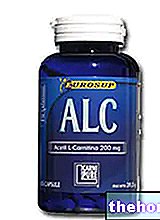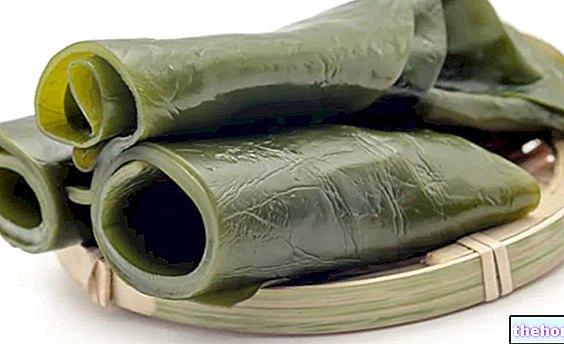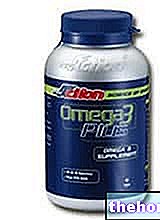See also: beta glucan in cosmetics
Generality
The term beta-glucans usually refers to a class of indigestible polysaccharides found in foods such as bran, oats, yeasts, fungi and algae.

The particular chemical characteristics give the beta-glucans a certain flexibility, but above all a very low digestibility, responsible for the mechanical properties carried out in the intestine.
The structure of beta-glucans therefore influences their metabolic functions, in particular their cholesterol-lowering, hypoglycemic and immunomodulatory activities.
Indications
Why are beta-glucans used? What are they for?
Classically, beta-glucans are used in the nutritional field for their cholesterol-lowering, hypoglycemic and immunomodulatory properties.
These activities essentially derive from the following biological properties.
Reaching the intestinal environment unaltered, beta-glucans would exert on the one hand a chelating action against glucose and dietary cholesterol, making their absorption poorer, and on the other hand they would facilitate their elimination through the faeces.
Furthermore, according to recent evidence, the fraction of beta glucans digested in the large intestine would give rise to bioactive glycosides and oligosaccharides, whose biological properties, not yet fully known, would justify the immunomodulating role of these nutrients.
Once introduced with food or through specific dietary supplements, beta-glucans would be able to activate the immune system in a gentle and balanced way, stimulating the activity of phagocytes (a subclass of white blood cells that has the task of trapping and destroying substances foreign, such as fungi, viruses, parasites and bacteria).
There would therefore be no risk of inducing that exaggerated immune response underlying many allergic phenomena and autoimmune diseases.
Benefits and Properties
What benefits have beta-glucans shown during the studies?
There are various scientific evidences relating to the clinical usefulness of beta-glucans, especially in the nutritional and dietotherapy fields.
From a "careful review of the literature, the regular consumption of beta-glucans:
- It would cause a reduction in blood cholesterol concentrations of over 10%;
- It would guarantee an improvement in the relationship between LDL cholesterol and HDL cholesterol;
- It would improve the patient's glycemic profile, making the absorption of dietary sugars more gradual;
- It would improve the insulin response to the glucose load;
- It would contribute, in vitro, to enhance the activity of macrophages, supporting non-specific primary defenses;
- It would increase the sense of satiety during low-calorie diets, improving compliance.
Dosage and method of use
How to use beta-glucans
The effective doses of beta-glucans obviously depend on the purpose.
For example, doses between 3 and 6 g per day, divided into two intakes before meals, would have proved effective both as a cholesterol-lowering remedy and for satiating power.
Side effects
The use of beta-glucans has generally been shown to be safe and well tolerated.
However, especially in some predisposed subjects, the consumption of beta-glucans could induce unpleasant intestinal manifestations, such as bloating and cramping pains.
Contraindications
When should beta-glucans not be used?
The use of beta-glucans is contraindicated in case of hypersensitivity to the active substance or to the extraction source.
Pharmacological interactions
What drugs or foods can modify the effect of beta-glucans?
There are no known drug interactions worth mentioning.
However, it should be remembered how, in a contextual administration, beta-glucans could reduce intestinal absorption and therefore the bioavailability of active ingredients, vitamins and minerals.
Precautions for use
What do i need to know before taking beta-glucans?
The use of Beta-glucans should take place with particular caution and under medical supervision in patients suffering from irritable bowel syndrome or other functional and organic disorders of the gastrointestinal tract.
Select plant Fir Acacia Acerola Sorrel Yarrow Yarrow Yarrow Aconito Adatoda Garlic Agnocasto Agrimonia Alchemilla Alkekengi Aloe Altea Witch Hazel Ammi or Visnaga Pineapple Andrographis Anemone Pulsatilla Angelica Anise Star Anise Japanese Star Anise Bitter Orange Bitter Areca Arnica Harpagophytum Arpagophyte Artemisia Asteragus Basil Asparagus Asparagus Peruvian Asparagus Asparagus Asparagus Hawthorn Boldo Borage Shepherd's Purse Boswellia Bucco Butea superba Cocoa Coffee Cajeput Calamus Calamus Marigold Camedrio Chamomile Roman Chamomile Camphor Cinnamon Ceylon Maidenhair Capuchin Artichoke Cardamom Cardiac Thistle Asian Thistle Carvi Cascara Cassia Catecu Catha Cabbage Celandine Chicory Centaurea Cinnamon Cypress Celandine Chives Cypress Coca Cola Colchico Combreto Condurango Comfrey Coriander Cranberry Barberry American Chrysanthemum Cumin Turmeric Damiana Digital Dioscorea Drosera Dulcamara Dunalilella Echinacea Eder a Ephedra Elenio Eleutherococcus Helichrysum Evening primrose Horsetail Alfalfa Erica Euphrasia Erisimo Escolzia Eucalyptus Farfara Farfaraccio Calabar bean Fenugreek Fennel Phytolacca Frangola Ash Fumaria Japanese Mushrooms Galega Ganoderma lucidum Garcinia Cambogia Mulberry Gentian Broom Ginkgo Ginkgo Guipana Guipana Gynestra Ginkgo Hibelia Gymnasium Hibiscus Guarulp St. John's Wort Horse Chestnut Ispaghul Hyssop Jaborandi Kava kava Konjac Laminaria Cherry Laurel Lavender Lemongrass Lespedeza Lovage Icelandic Lichen Lemon Flax Lippia Licorice Lobelia Hops Maca Marjoram Maize Mallow Manna Marrubio Marrubio d "water Matè Melaleuca Meliloto American Lemon balm Myrtle Myrama Walnut Nutmeg Walnut vomica Olive tree Meadowsweet Ononide Opuntia Oregano Orthosiphon Nettle Poppy Papaya Parietaria Feverfew Passiflora Chilli Perilla Periwinkle Phyllanthus Plantain Picrorhiza Pilosella Pino Pisci dia Podofillo Polygala Grapefruit Parsley Psyllium Pueraria mirifica Butcher's broom Pygeum Quassia Oak Rhubarb Ratania Rauwolfia currant Castor bean Rhodiola Rosehip Rosemary Rue Willow Sarsaparilla Sage Elderberry Sassafras Sedum Ergot Senna Serenoa Repens Soybean Solidago Tansy Taraxus Tamarind Tamarind Tamarind Tamarind Tamarindo Ursina Valerian Vanilla Mullein Verbena Veronica Viburnum Vinca Pansy Mistletoe Vine Withania Yohimbe Saffron Ginger Pumpkin Select disease Juvenile Acne Rosacea Tinnitus Tinnitus Aerophagia Tendon Affections Afonia Aphthae Algias Functional Halitosis Breastfeeding Allergy Anemia Anguish Anxiety Arteriosclerosis Asthrosis Asthrosis Arthritis Arthritis Men Sex Woman Blepharitis and Conjunctivitis Eye bags Bronchitis Gallstones Kidney stones Salivary stones Baldness Androgenetic Candida Fragile hair Caries Headache Cellulitis Motion sickness Cystitis C limaterio Cholecystopathy High cholesterol Ulcerative colitis Colonoscopy Contusions Hematoma Convalescence Couperose Depression Dermatitis Diaper dermatitis Diabetes Diarrhea Erectile dysfunction Dyslipidemia Dysmenorrhea Dyspepsia Disturbances of vision Hemorrhoids Epistaxis Herethism Heart disease Fever Fibromyalgia Gastro-intestinal disease Flatulence Hypertension Fibromyalgia Gastrointomnia Jaundice Laryngitis Renal lithiasis Toothache Sore throat Thinness Menopause Meteorism Mononucleosis Alzheimer's disease Crohn's disease Nausea Vomiting Obesity Dark circles Onychomycosis Osteoporosis Dry skin Periarthritis Piorea Low pressure Prostatitis Psoriasis Colds Breast fissures Anal fissures Gastro-nasal rhinitis Senescence Premenstrual Syndrome Sinusitis Quit smoking Overweight Fatty liver Constipation Stomatitis Stress Cough Triglycerides high Ulcer Burns Nails Brittle flashes Heat Warts Dizziness Properties herbal Tanning Abortive adaptogenic Aphrodisiac bittering analgesic anesthetic anorectics analgesic antacid anti-allergic anti-asthmatic Antibiotic catarrh Anticellulitiche anticonvulsant Antidiaforetiche antidiarrheal edematous anthelmintic antiemetic Antiemorroidarie antiphlogistic Antiidrotiche Antinevrotiche Antioxidants antipyretic antirheumatic antiscorbutic Antiseptic antispasmodic anti-uric Aperitive Flavoring Astringent Balsamic Bechiche Capillarotrope Cardiotonic Carminative Cathartic Caustics Healing Cholagogues Choleretic Dyes Decongestants Deodorants Purifying Diaphoretic Cleansers Disinfectants Detoxifiers Thirst quenching Diuretics Exciting Emetics Emmenagogues Emollients Hemostatic Energies Hepatoprotectors Expectorants Eupepticus Moisturisers Galactosensitizers lanti Hypertensive Hypnotic Hypoglycemic Hypotensive Irritants Laxatives Soothing Narcotic Nerves Nutrients Odontalgic Pectoral Purgative Revulsive Remineralizing Refreshing Rubefacient Scialagoghe Sedative Soporifugas Sneezing Stomachic Stomatics Narcotic Vascular Tightenitis



.jpg)












.jpg)











